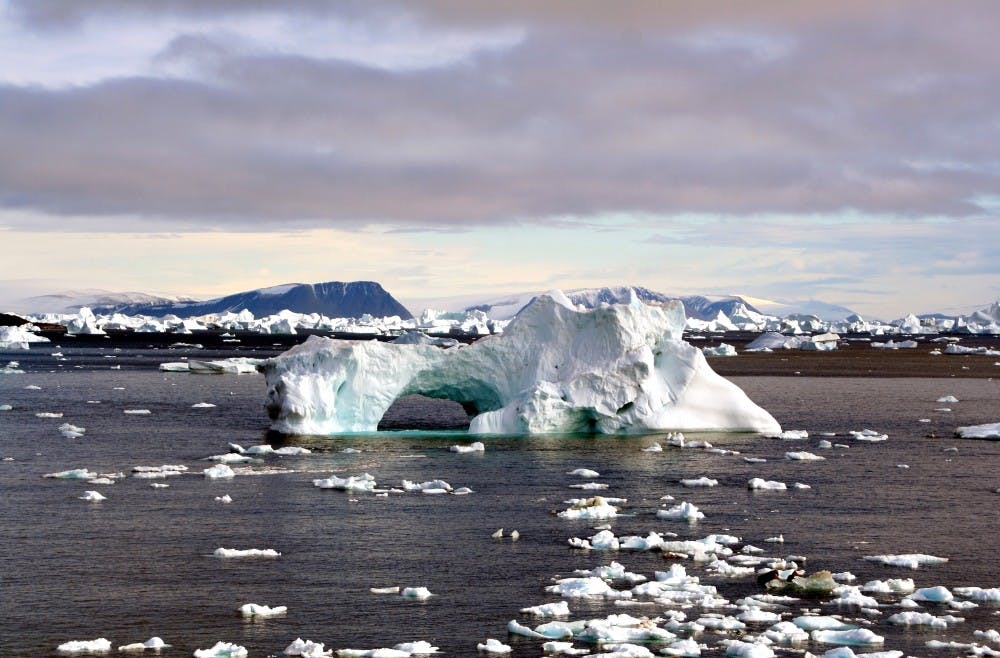A study from scientists at Duke and NASA is shedding light on the variability of global temperatures and the role that human activities play in global warming.
Patrick Brown, a Ph.D. student in the Nicholas School of the Environment, Wenhong Li, assistant professor of climate and civil and environmental engineering, and two scientists from the NASA Jet Propulsion Laboratory used NASA satellite data and physical climate models to study recent global temperature changes. They studied the mechanism through which the planet is able to cool itself down and return to a temperature equilibrium after fluctuations due to natural warming forces, demonstrating that in the absence of external drivers like carbon dioxide emissions, the global temperature should be relatively stable.
The group published their findings Feb. 1 in the Journal of Climate.
“We show in detail why the earth can cool itself down after natural unforced warming events like El Niño,” Brown said. “It’s really does undermine the idea that the earth’s temperature can drift randomly or move itself into other climate states. This means that the type of warming we’ve seen since 1900 does require external forcings and drivers like the increase in greenhouse gases caused by human activities.”
Brown added that this work addresses a “big-picture” question about global warming—whether the earth’s natural cycles in temperature can fully account for recent trends of global warming.
“Within the climate community, there is at least a consensus that current temperature changes cannot be explained purely by natural variation,” Li said.
The scientists examined global and local temperature patterns due to natural events, when external drivers are not influencing the climate.
Natural warming events, such as El Niño, can be amplified by what Brown called “positive feedbacks” of energy. He gave the example of natural warming causing sea ice to melt, which leads to more solar radiation energy absorbed at the surface because the reflective snow is being replaced by a darker land surface, which in turn causes more warming.
These positive feedbacks affect temperatures locally but also happen all over the world, he explained.
Using NASA satellite data collected since 2002 and physical climate models, the researchers found the mechanism through which the earth prevents these natural warming events from amplifying and maintains global temperature stability.
“It has to do with the way that the earth redistributes energy of an unforced warming event like El Niño,” Brown explained. “It’s going to be able to cool itself back down, because the earth moves energy away from these locations where you have positive feedbacks to locations where negative feedbacks dominate. At those locations you’re able to get rid of excess energy essentially.”
Changes in clouds and water vapor also allow the earth to release more energy into space, Brown said, adding that many other scientific details are part of the explanation.
Although the warming effect of increasing greenhouse gas emissions is universally accepted now in the scientific community, many still disagree over how much warming the planet will see in the next century, how climate change will specifically impact natural ecosystems and humans and what the best strategy is to address the issue, Brown said.
“But there’s a large consensus on the basics,” he added. “Our study is in this basics zone, but it was an assumption before that we felt needed to be shown in more detail.”
Li noted that the research, which was funded by the National Science Foundation and other programs, could help clarify misconceptions about the phenomenon of global warming.
“We wish to educate people and to get them to know the science behind the phenomenon—to better understand why climate change really happens and what we can do to prevent severe weather due to climate change in the future,” Li said. “I really would like the younger generations to take an important role in terms of educating and thinking about what our future could be.”
Get The Chronicle straight to your inbox
Signup for our weekly newsletter. Cancel at any time.

